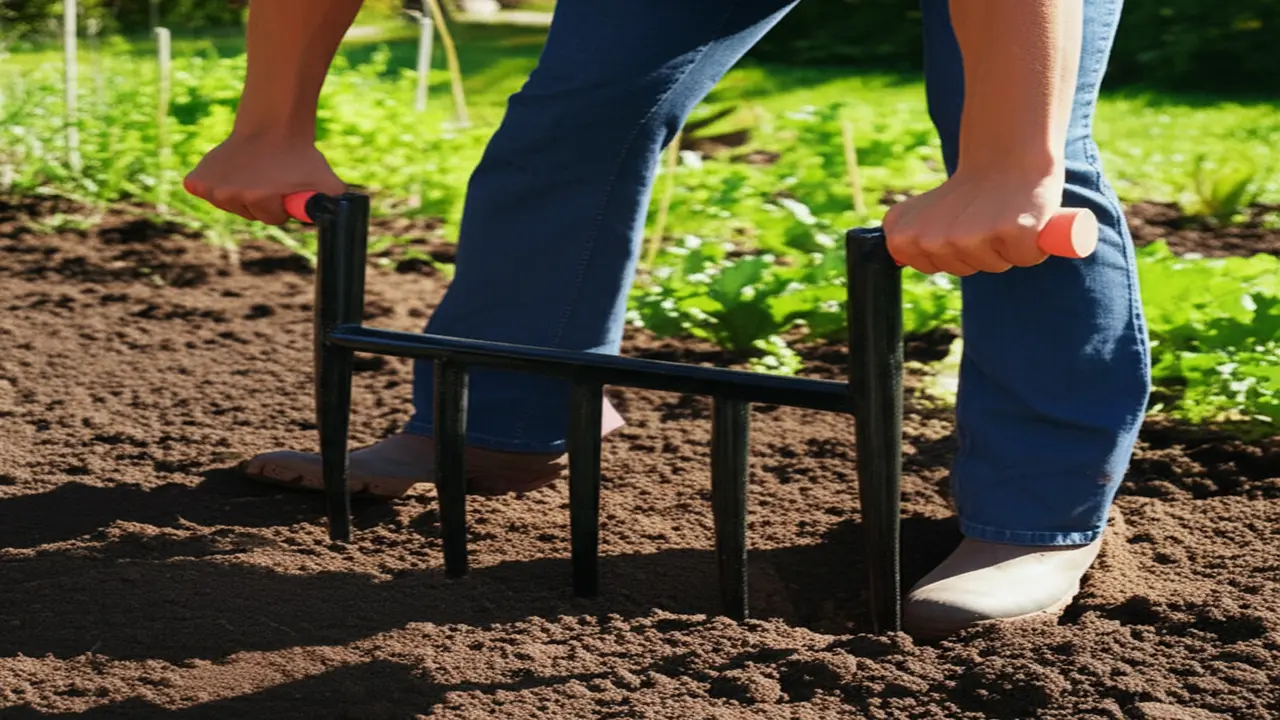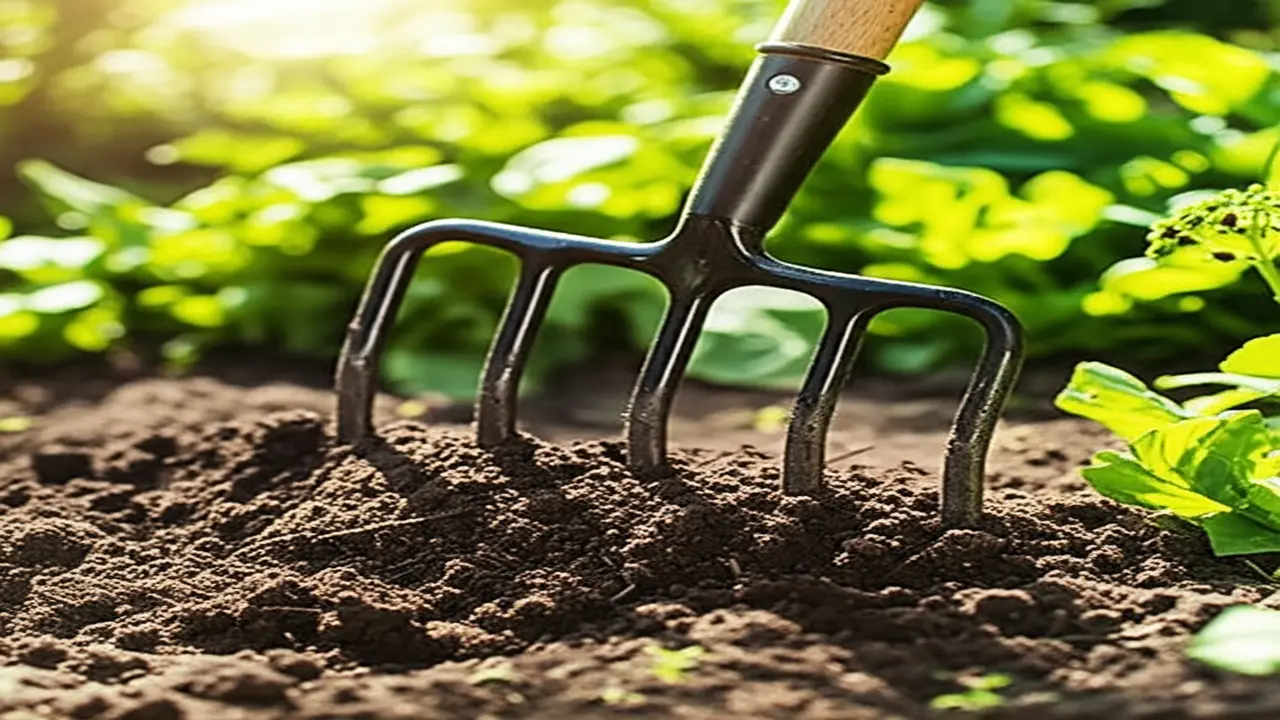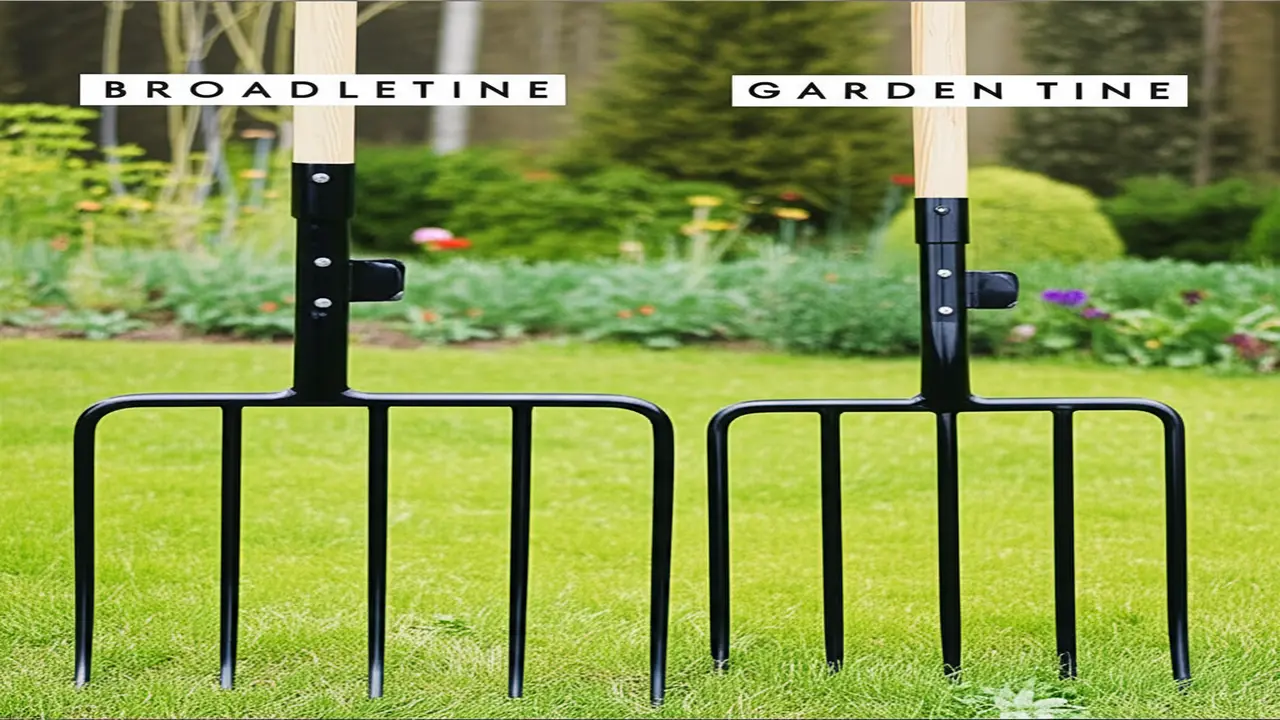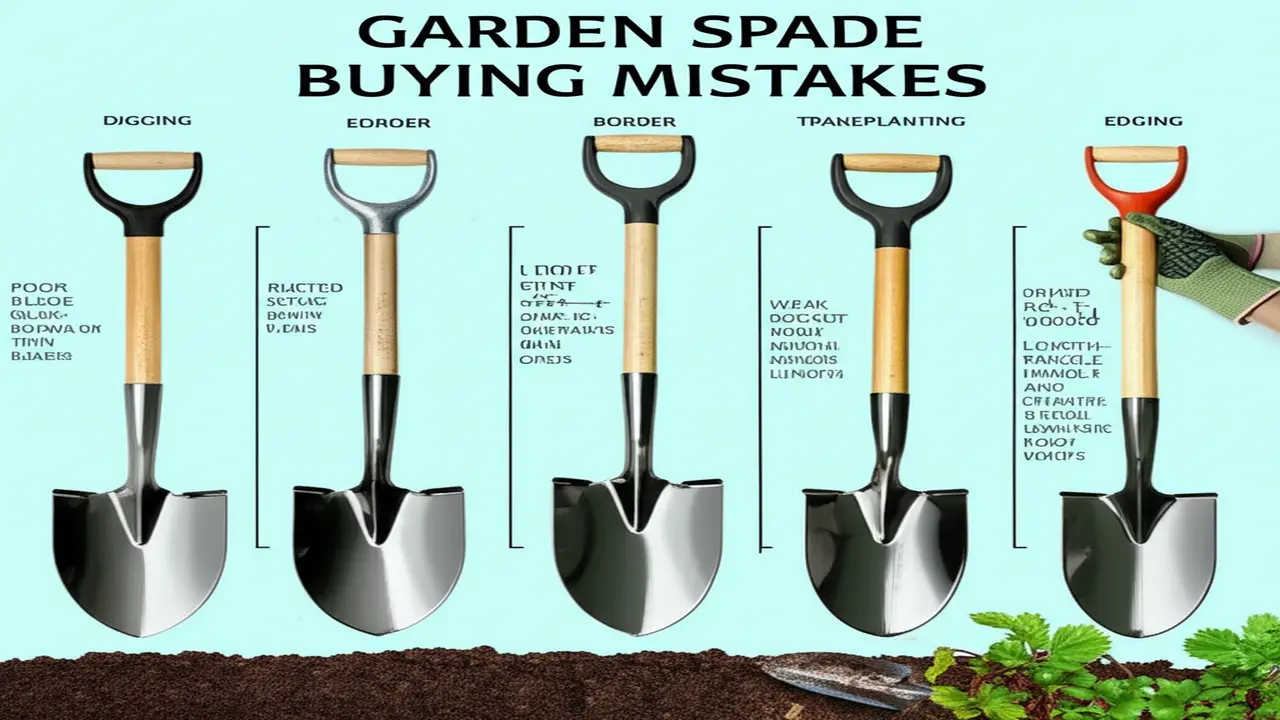Broadfork vs Garden Fork: The Ultimate Guide for 2025
Selecting the right soil-working tool is critical for both your garden’s long-term health and your gardening comfort. A vital decision lies between using a broadfork or a garden fork, each designed with distinct purposes affecting soil structure and cultivation methods. This guide offers a thorough comparison of broadfork vs garden fork, empowering gardeners to make informed choices tailored to their soil type, garden size, and cultivation philosophy in 2025.
Introduction: Cultivating Clarity in Your Garden Tool Choice
Gardening thrives on the relationship between soil and the tools we use to nurture it. While a broadfork primarily focuses on deep aeration with minimal soil disturbance, a garden fork traditionally excels at digging and turning soil. Both are essential in different contexts, and understanding their unique attributes is key to boosting soil vitality and reducing gardener strain.
The Broadfork: Deep Aeration & Soil Stewardship
What is a Broadfork?
The broadfork has its roots firmly planted in permaculture and no-till gardening traditions, reflecting a philosophy that emphasizes soil preservation while enhancing aeration. This tool features a set of long, sturdy tines—usually 8 to 18 inches in length—that are either flattened or pointed. A wide crossbar provides leverage for foot pressure, allowing the user to loosen compacted soil layers gently without overturning the soil horizons. Dual parallel ergonomic handles, often made of wood, fiberglass, or metal, contribute to improved control and reduced physical strain.

Core Purpose & Philosophy
Unlike tools that invert and mix soil layers, the broadfork serves to non-invasively loosen compacted soil, preserving its natural structure and the crucial microbial community responsible for fertility and nutrient cycling. By breaking up dense layers without disturbing the stratification, it enhances drainage and root penetration while maintaining soil’s organic health.
Primary Benefits
Using a broadfork enhances soil aeration deeply, fostering improved water infiltration and oxygen availability for roots. It also dramatically reduces physical strain compared to traditional digging tools, thanks to its ergonomic design. These benefits make it an invaluable asset for gardeners managing new beds, working with no-till raised beds, or handling compacted pathways.
Ideal Use Cases & Scenarios
The broadfork is ideally suited for preparing new garden beds, annual soil aeration in no-till or raised garden systems, harvesting deep-rooted crops while maintaining soil integrity, and breaking up hardened walkways. Its design complements practices that aim for sustainable soil management.
The Garden Fork (Digging Fork): Versatility & Traditional Cultivation
What is a Garden Fork?
The garden fork, often referred to as a digging fork, is a classic soil cultivation tool recognized by its shorter tines, typically ranging from 6 to 12 inches, that may be squarish or flat. It generally features a single D-shaped or T-shaped handle and a narrower head. Garden forks come in several varieties, including compost forks and border forks, each designed for specificity. Materials like steel for tines and wooden or synthetic handles are common considerations for durability and grip.

Core Purpose & Function
The primary function of a garden fork is versatility in soil manipulation. It excels at digging, turning, breaking up clods, and mixing organic amendments. Unlike the broadfork, soil inversion is customary with this tool, which can be beneficial for traditional cultivation but potentially disruptive to some soil organisms and layers. Garden forks also serve well in targeted tasks such as compost aeration and dividing perennials.
Primary Benefits
Valued for its adaptability, the garden fork provides precise digging, ease of compost mixing, and the ability to lift root crops gently. It tends to be a more affordable and familiar tool for most gardeners, presenting a straightforward option for a range of soil cultivation tasks.
Ideal Use Cases & Scenarios
Practically, the garden fork is ideal for traditional bed turning, soil amendment mixing, dividing perennial plants, selective weeding, and harvesting smaller root vegetables. Its design enables efficient soil invasion where more aggressive soil modification is acceptable or necessary.
Broadfork vs. Garden Fork: A Head-to-Head Comparative Analysis
Understanding the nuanced differences between these two soil tools helps match them to your garden needs. The comparison below explores key attributes side by side.

Design, Mechanics & Ergonomics
The broadfork’s design includes long, flat or pointed tines that penetrate deep with minimal disturbance, dual parallel handles that improve leverage and reduce wrist strain, and a broad crossbar for foot pressure. Conversely, the garden fork features shorter, sturdier tines, a single handle, and a narrower head optimized for precision digging and soil inversion. Material quality across both tools—particularly steel quality and handle durability—affects lifespan and user comfort.
Soil Impact & Health Philosophy
Broadforks focus on non-inverting soil loosening that safeguards soil structure and microbial ecosystems, promoting sustainable soil health. Garden forks, while effective for mixing and breaking soil, invert soil layers more frequently, which may disrupt microbial balance over time but suit gardeners who prefer traditional cultivation techniques.
Effort, Efficiency & Physical Strain
With its ergonomic features, the broadfork typically requires less physical effort and generates fewer strain injuries for deep aeration tasks. It works more efficiently on compacted or dense soils without extensive digging. The garden fork, however, can demand more exertion due to soil inversion and precision work, especially in denser or rocky soils, but provides quicker initial bed turning.
Versatility & Specific Task Performance
While the broadfork shines specifically in deep aeration and soil stewardship tasks, the garden fork offers greater versatility across multiple gardening operations such as compost mixing, root harvesting, and targeted digging. Each tool has distinct strengths when matched with particular gardening scenarios and philosophies.
Learning Curve & Skill Required
The broadfork may require a brief adaptation phase due to its distinct use method involving leverage and minimal soil invasion. The garden fork’s widespread familiarity offers a gentler learning curve but also demands skill to avoid damaging plants and soil when digging.
Cost, Value & Longevity
Broadforks generally command a higher price point reflecting their specialized design and durable materials, often providing long-term value through reduced soil degradation and user fatigue. Garden forks, available in a range of price points, are usually more affordable but may require more frequent replacement, especially in demanding garden environments.
Which Tool Do You Need? A Decision-Making Guide
Your choice between a broadfork and garden fork should consider your garden’s size, soil condition, typical tasks, physical capacity, and ecological philosophy. For example, gardeners cultivating new plots with compacted soil and embracing no-till methods will benefit from a broadfork’s soil-friendly design. Meanwhile, those managing traditional beds, compost areas, or needing versatile digging tools might find the garden fork more practical. Physical comfort and budget also play significant roles in selecting the best tool for you.
Do You Need Both a Broadfork and a Garden Fork?
In many garden settings, having both tools is advantageous. Their complementary functionalities allow gardeners to optimize efficiency and soil health—using the broadfork for deep aeration and compaction relief, and the garden fork for precise digging, mixing, and harvesting tasks. Together, they cover a wider range of soil cultivation needs.
Tips for Purchasing & Effective Use
When buying, focus on construction quality, ergonomic handle design, and reputable brands that stand behind their products. Proper technique is essential—always leverage your body weight with a broadfork and avoid twisting motions to prevent injury. For garden forks, aim for controlled, targeted digging to avoid damaging roots and soil structure. Regular maintenance including cleaning and timely rust prevention will extend the life of both tools. Storing them in dry conditions and using protective coatings on metal parts keep them ready for the next gardening season.
Conclusion: Empowering Your Gardening Journey
Choosing between a broadfork vs garden fork reflects a gardener’s engagement with soil health, workload management, and cultivation approach. Their distinct roles and benefits support different but equally vital gardening methods in 2025. Grounding your choice in your garden’s requirements and your personal gardening ethos ensures that you invest in tools that not only perform but also enhance your relationship with the soil beneath your feet.
Frequently Asked Questions (FAQs)
Can a broadfork replace a rototiller?
While a broadfork can loosen compacted soil similarly to a rototiller, it does so without inverting or extensively disturbing soil layers, making it preferable for no-till gardens. However, for heavy soil turnover tasks, a rototiller may be more efficient in less conservation-minded contexts.
Is a broadfork truly ‘no-dig’?
Broadforking is often associated with no-dig principles because it loosens soil without overturning horizons or mixing layers, thus preserving soil structure and beneficial organisms. Though it disturbs soil vertically, it avoids the disruptive horizontal soil mixing typical of traditional digging.
What is the difference between a digging fork and pitchfork?
A digging (garden) fork has shorter, sturdier tines designed for soil work—digging, turning, and breaking up earth. In contrast, pitchforks have longer, slender tines intended primarily for handling loose materials like hay, straw, or compost.
How often should soil be aerated with a broadfork?
A broadfork can be used annually or biannually, depending on soil compaction levels and crop rotation schedules. Frequent aeration supports root growth and maintains soil porosity without disturbing biological activity.
What sizes are available for broadforks and garden forks?
Broadfork tines typically range from 8 to 18 inches in length with widths accommodating standard garden bed sizes. Garden forks vary more widely with tines from 6 to 12 inches and handles designed for different user heights and preferences.
How much space is needed to effectively use a broadfork?
A broadfork requires enough room to insert the tines deeply and work without obstruction, commonly suited to beds at least 2 to 3 feet wide. Its width and handle design necessitate open areas for safe and ergonomic movement.
For further insights on selecting ergonomic garden tools that complement your soil cultivation choices, explore our Ergonomic Garden Spades guide and related resources.
Expert advice from authoritative horticultural sources such as the Permaculture Research Institute and the Royal Horticultural Society offer further evidence supporting sustainable soil aeration techniques.

